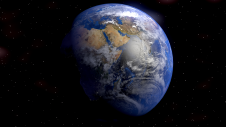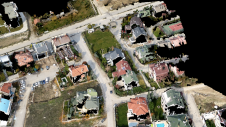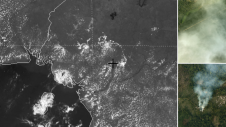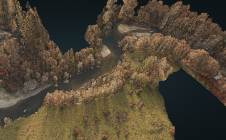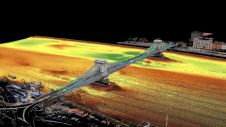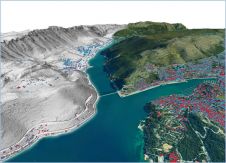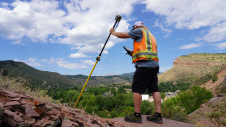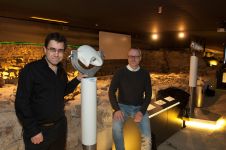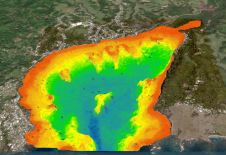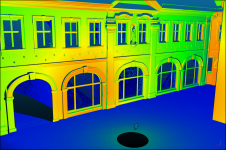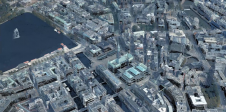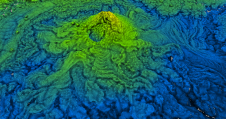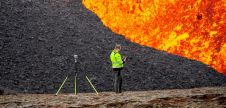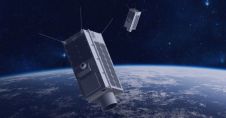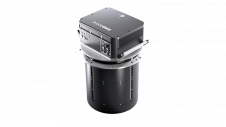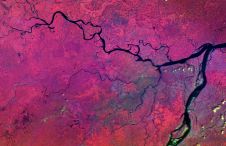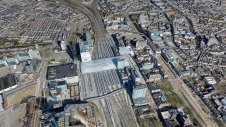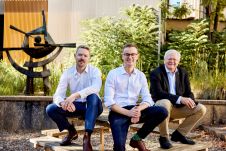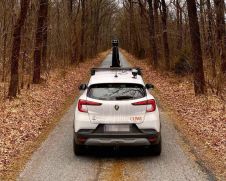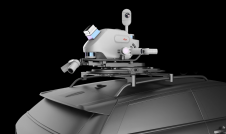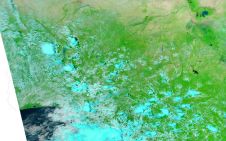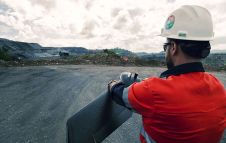Catching up on Photogrammetry and Laser Scanning
An Impression of the Oldenburger 3D-Tage Event
In the German geospatial industry, there is a longstanding platform for open and constructive dialogue with researchers but also informal talks and discussion in between. It is called theOldenburger 3D-Tageand is held annually at the Jade University of Applied Sciences in the northern German city of Oldenburg. This article provides a round-up of the 18thedition of the event which took place in February this year and offered delegates an inspiring update on the latest developments in all aspects of 3D mapping, both photogrammetry and laser scanning.
The3D-Tage programmeis pretty straightforward: two full days of sessions where researchers and mapping professionals from universities, manufacturers and survey companies present their findings and update the attendees on the progress they are making in 3D mapping. Ranging from image processing to mobile platforms such as unmanned aerial vehicles (UAVs or ‘drones’) and from scanning to calibration and registration systems, various aspects of photogrammetry and laser mapping were examined from various perspectives, and applications were highlighted in fields including cultural heritage, urban mapping and construction.

New approaches, new solutions
Trade shows are no longer just ‘marketplaces’ where companies showcase their latest products and do their utmost to convince potential customers to buy their cutting-edge, state-of-the-art digital aerial cameras, terrestrial laser scanners, UAV mapping systems or total stations. Nowadays, events such asIntergeo,Trimble Dimensions,HxGN Liveand also smaller shows are all opportunities for companies to demonstrate their innovative R&D efforts. Even so, gatherings such as the one in Oldenburg go a step further and give delegates an interesting look behind the scenes, and this year was no exception. Researchers involved in a multitude of disciplines – from engineering to computer science – presented their work in a variety of geospatial domains… and that work is often focused on creating new solutions that will benefit the surveying profession in general.
Artificial intelligence and machine learning are two technologies taking object detection and feature extraction to new heights. The potential of object-based classification of point clouds was addressed by Jean-Jacques Ponciano from Mainz University of Applied Sciences. In his presentation, he talked about the search for anobject recognition method基于静态的适应不同的场景and dynamically generated knowledge. Geospatial professionals are producing huge unstructured 3D datasets, and the current challenge is how to efficiently extract the objects contained in these datasets. Which solutions would not be too time-consuming and expensive? Ponciano and his colleagues are trying to overcome the limitations through a more general and more flexible integration of any kind of useful knowledge into the processing.

Another approach that captivated the audience was the presentation by Sebastian Fiedler from Würzburg-Schweinfurt University of Applied Sciences. He outlined an interesting approach to high-precision camera calibration for photogrammetry by means of a 3D point cloud of a control point array created by laser scanning and reverse engineering. In thisnew method, laser scanning transforms the control point field into a dimensionally stable and high-resolution 3D point cloud. The determination of the coordinates no longer takes place in the control point field itself, but is performed on the subsequent 3D point cloud using reverse engineering software.
Unmanned aerial surveying innovations
Over recent years, the UAV has established itself as an important tool for surveyors, and advanced integrated solutions with high-end cameras are now available accompanied by innovative mapping methods. In parallel with the rise of the UAV, new providers – both smaller innovative players and traditional companies – have quickly entered this growth market, offering new solutions and new technologies. This has led to a wide range of choice, which means that there is something for everyone: high-end solutions, but also low-cost alternatives. Unsurprisingly, UAVs played an important role in many projects presented at the 3D-Tage event.

Thomas Kersten from HafenCity Hamburg talked about UAV-based image flights in two photogrammetric monitoring projects: one for groynes on the River Elbe and the other for a cliff on the Baltic Sea. Both case studies are good examples of a simple practical application in which a low-cost UAV is used in a manual controlled UAV survey to efficiently perform photogrammetric monitoring. In another session, Heinz-Jürgen Przybilla from Bochum University of Applied Sciences presented a comparison between low-end and high-end cameras for UAV mapping. His interesting study provided a good insight into the results of the cameras, as well as the variation in results when using different processing software.
His interesting study provided a good insight into the results of the cameras, as well as the variation in results when using different processing software based on the precision of the x,y,z accuracy and the root mean square error (RMSE).
应用领域
‘Applications of 3D photogrammetry and Lidar mapping in its various forms’ would be a fitting description of the programme of the two days in Oldenburg. Just some of the striking examples include automatic navigation and communication to the exploration team in the case of disaster situations, the identification of energy losses through the combination of terrestrial 3D laser measurement and thermography panoramic imagery, and the use of 3D laser scanning to obtain new insights into the history of buildings for heritage mapping purposes. Additionally, the spotlight was on future-oriented technologies such as virtual reality and augmented reality that are rapidly gaining a foothold. Furthermore, besides the many outdoor mapping solutions there was a focus on indoor mapping, which is widely regarded as ‘the next geospatial frontier’. Labelled as aGeheimtippafter earlier editions, this topic is likely to receive even more attention at next year’s 3D-Tage event.
Make your inbox more interesting.Add some geo.
Keep abreast of news, developments and technological advancement in the geomatics industry.
Sign up for free

